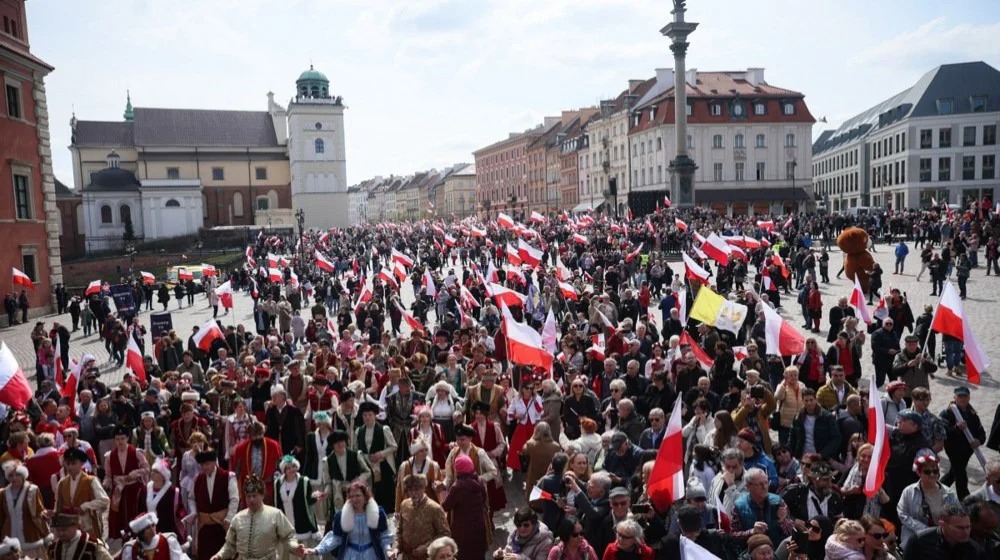
Politico: America Is Withdrawing Its Troops from Europe, and Germany Has Little Say in It
Germany knows that the American army won’t stay on European soil forever, but it is now trying to convince them not to leave too soon, writes Politico.
For decades, the U.S. military presence on German soil has been the backbone of America’s global operations – and a pillar of European defense. But as Washington prepares to reassess where its troops are stationed, officials in Berlin feel increasingly uncertain about what that will mean for them, reports Politico, as cited by N1.
Germany’s Defense Minister Boris Pistorius traveled to Washington on Monday to make sure Germany stays informed about U.S. plans. After meeting with U.S. Defense Secretary Pete Hegseth, he made it clear that Berlin expects a change in the American stance.
“Two years ago, I began pointing out that at some point it would become clear that Americans would eventually have less presence here… For now, we in Europe could count on them doing more. But we must acknowledge that they have their own interests – in the Indo-Pacific, in the security of maritime trade routes,” Pistorius told reporters after their meeting.
What’s missing is clarity on what “less” actually means. German officials say they aim to be part of the coordination efforts. But they have not received any firm commitments about what the U.S. plans to do – or when.
NATO allies are also concerned, and the U.S. ambassador to NATO, Matthew Whitaker, tried to calm the situation on Thursday. Speaking to journalists at NATO headquarters in Brussels, he said he has “daily conversations with our allies about this process.”
“We agreed there will be no surprises and no gaps in… Europe’s strategic framework,” he added.
Berlin Prepares for U.S. Withdrawal
At the heart of these discussions is the Global Posture Review, a broad assessment the Pentagon is conducting again on the worldwide deployment of American forces.
Its goal is to adjust U.S. forces to shifting global priorities – especially rising tensions in the Indo-Pacific and pressure to cut American spending abroad. The final report is expected by September.
For Europe, this could mean fewer American troops on the continent. In February, Hegseth stood next to his Polish counterpart and made it clear:
“Now is the time to invest [in your own militaries], because you cannot assume that the U.S. presence will last forever.”
The German government, more than most, has reason to take this warning seriously.
Germany hosts more American troops than any other European country, with around 35,000 U.S. soldiers stationed in about 35 municipalities.
This includes Ramstein Air Base, a central hub for U.S. air operations and satellite communications; Grafenwöhr, which according to military data is the largest U.S. Army training area outside the United States – where Hegseth himself was reportedly temporarily stationed as a soldier – and a key headquarters for military personnel.
For Germany, U.S. military support has long been a cornerstone of national security – from the Cold War to the present, notes Politico.
However, as Eileen Matlé, senior fellow for security policy at the German Council on Foreign Relations, points out, the American presence also serves Washington’s interests.
“Bases like Ramstein are used not only for European defense but also to project power to the Middle East and, to some extent, Africa,” she told Politico.
For example, Europe has served as a “gateway” for U.S. military equipment to other parts of the world, she added.
In Matlé’s view, one likely outcome of the Global Posture Review would be the withdrawal of about 20,000 U.S. troops who were sent to Europe in 2022 under then-President Joe Biden after Russia’s invasion of Ukraine.
The current number of American troops in Europe varies between 90,000 and 100,000, she added.
Germany Seeks to Keep Washington Engaged
This uncertainty is precisely what Pistorius is trying to prevent from turning into a crisis.
These concerns have already led Germany to step up quiet diplomatic efforts. Officials in Berlin have advocated for a phased, transparent approach, emphasizing the country’s growing military investments and its readiness to host U.S. forces.
In June, Germany announced plans to increase defense spending from around €86 billion in 2025 to about €153 billion by 2029 – raising it to roughly 3.5 percent of GDP to meet NATO targets and support commitments related to shared infrastructure.
According to Matlé, the efforts are deliberate – and, so far, moderately successful.
However, what comes next depends entirely on Washington.





